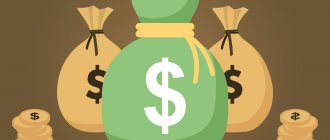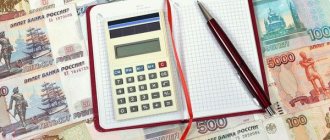How the approach to transaction comparability has changed
When checking market prices, you need to compare a transaction between related parties and a transaction between independent parties.
But you can compare not just any transactions, but only comparable transactions, that is, those made under the same commercial and (or) financial conditions. Or those where there are differences between the conditions that do not have a significant impact on the results. Finally, transactions are comparable if their terms are different, but the difference can be accounted for through adjustments. By the way, a similar definition of comparability existed before - in Article 40 of the Tax Code of the Russian Federation. But now there are many additions and clarifications.
In particular, the characteristics of transactions by which comparability can and should be judged are named. There are only five of them:
1. Characteristics of goods (works, services) that are the subject of the transaction.
2. Characteristics of the functions performed by the parties to the transaction: what assets they use, what risks they take, how they distribute responsibility, etc. The law being commented on lists the main functions (see Table 1) and the main risks (see Table 2).
3. Terms of contracts that affect the price. For loan agreements, credit agreements, as well as surety agreements and bank guarantees, credit history and solvency, the nature and market value of the collateral, the term and currency of the loan, the procedure for determining the interest rate and other conditions are taken into account.
4. Characteristics of commercial strategies used by the parties to the transaction and influencing the price.
5. The last criterion is the terms of the transaction, which clearly demonstrate the presence or absence of comparability. This is the quantity of goods (volume of work or services), deadlines for fulfilling obligations, payment terms, exchange rates and their changes, etc.
Market value assessment: justification for the need
The regulatory framework governing the processes of assessing the assets of legal entities and individuals is presented:
- Federal Law “On Valuation Activities in the Russian Federation”;
- PBU in the context of assessments for specific types of property;
- Federal Assessment Standards (FSO).
In accordance with PBU 5/01, the current market value is the amount of money that can be received by an organization when selling a certain property. Federal standards define it as the most probable alienation price in an open market and in the presence of a normal level of competition.
Market value can be expressed in monetary terms. It is necessary for:
- implementation of a transaction for the purchase or sale of an expensive asset;
- calculating the starting price of an item put up for sale at auction;
- obtaining a loan secured by real estate;
- the market price is needed to insure the property;
- carrying out the procedure for the seizure of a specific property object for state needs;
- calculating the amount of damage incurred due to damage to the assessed object;
- accepting the asset for accounting and placing it on the balance sheet;
- contribution of property as a contribution to the capital of the organization.
How to compare markets for goods, works and services
When deciding on the comparability of transactions, it is necessary to compare the characteristics of the markets where these transactions are made. If differences in market characteristics do not have a significant impact on commercial and financial conditions, then the transactions can be considered comparable. Another option is allowed when there are differences between the characteristics of markets, but their influence can be eliminated through adjustments.
Factors to consider when comparing the two markets are listed in the new Title VI of the Tax Code. These factors include:
1. Geographical location of markets and their size.
2. The presence of competition and the relative competitiveness of sellers and buyers.
3. Availability of homogeneous goods (works, services) on the market.
4. Supply and demand, as well as the purchasing power of consumers.
5. Level of government intervention in market processes.
6. Level of development of production and transport infrastructure.
7. Other market characteristics affecting the transaction price.
Let us add that the definition of the market has not changed. The market still refers to the sphere of circulation of goods (works, services). As before, this area is determined based on the ability to buy or sell goods (work, services) in the nearest territory without significant additional costs.
What sources of information can you use?
Taxpayers who wish to voluntarily apply market prices, or who collect documents at the request of the Federal Tax Service, have the right to use any available sources of information.
But there are restrictions for tax authorities. When checking market prices, employees of the Federal Tax Service of Russia must find out whether the company being inspected has made comparable transactions with independent parties. If it did, then information about such transactions should be used when controlling prices for “interdependent” transactions. No other sources can be used in this case.
And only if the audited organization did not have comparable transactions with independent persons, tax authorities are allowed to obtain information from outside. You can use the following information:
- information on prices and quotes on Russian and foreign exchanges;
- customs statistics of foreign trade of the Russian Federation;
- information on prices, limits of price fluctuations and stock quotes from Russian and foreign official sources and from publicly available publications and information systems;
- data from information and pricing agencies;
- information about any other transactions of the taxpayer being audited.
If nothing from the above list could be found, or the information turned out to be too scarce, auditors from the Federal Tax Service have the right to use the data from accounting and statistical reporting. In addition, fiscal officials can obtain information from appraisers.
Who should use market price determination methods and when?
After selecting sources of information, inspectors will proceed directly to studying the transaction price, for which they will use one of the five methods provided for in the new Section VI of the Tax Code of the Russian Federation.
The taxpayer is not obliged to rely on these methods either when concluding a transaction or when calculating taxes. In other words, the company has the right to set any prices and, based on them, determine the tax base. But then, during the inspection, inspectors can establish a price discrepancy, make additional charges and impose a fine.
To prevent this, an organization has the right to voluntarily use methods for tax purposes.
Let's talk in detail about all five methods.
Comparable market price method
It applies if there is sufficient information about at least one comparable transaction, the subject of which is identical (or similar) goods, works or services.
This method is a priority. This means that it is permissible to use other methods only in cases where the method of comparable market prices is impossible, or it does not allow one to draw reasonable conclusions.
The essence of the method is as follows. If you have information about the prices of several comparable transactions, you need to determine the price range. To do this, you need to take the price of each of the comparable transactions (except for the one being verified) and distribute it in ascending order. Then assign a serial number to each value, starting with the smallest.
Then find the minimum and maximum sample values.
To find the minimum value, take the number of values in the sample and divide by 4.
If you get an integer, then you need to determine what value in the sample the ordinal number equal to this integer has. And calculate the arithmetic mean between this value and what follows it in ascending order. The resulting figure is the minimum value of the market price range.
If you get a fractional number, then you need to find the sample value whose serial number corresponds to the integer part of the fraction increased by one. This is the minimum value of the market price interval.
Example 1
The sample includes data on five comparable transactions with identical goods.
The price of the first transaction is 1,000,000 rubles, the second is 1,500,000 rubles, the third is 2,750,000 rubles, the fourth is 3,050,000 rubles. and the fifth - 3,430,000 rubles.
Divide the number of values by 4 and get 1.25 (5:4). This is a fractional number, and its integer part is equal to 1. This means that the minimum value of the market price interval is the value with number 1 increased by one. That is, this value is 1,500,000 rubles.
Now we need to find the maximum value. To do this, take the number of values in the sample and multiply by 0.75.
If you get an integer, then you need to determine what value in the sample the ordinal number equal to this integer has. And calculate the arithmetic mean between this value and what follows it in ascending order. The resulting figure is the maximum value of the market price range.
If you get a fractional number, then you need to find the sample value whose serial number corresponds to the integer part of the fraction increased by one. This is the maximum value of the market price interval.
Example 2
The sample includes data from four comparable transactions involving identical goods.
The price of the first transaction is 5,000,000 rubles, the second is 5,535,000 rubles, the third is 6,340,000 rubles. and the fourth - 6,785,000 rubles.
We multiply the number of values by 0.75 and get 3 (4 x 0.75). This is an integer. We look for a value in the sample with the same number and the next one in ascending order. The arithmetic mean between them is equal to 6,562,500 rubles ((6,340,000 rubles + 6,785,000 rubles) : 2). This figure corresponds to the maximum value of the market price interval.
Once the price range has been determined, you need to see whether the price of the transaction being checked falls within it. If it hits, then the price of this transaction corresponds to the market price.
If the price of the transaction being checked is less than the minimum value of the interval, then taxes should be calculated based on the minimum value.
If the price of the transaction being checked is greater than the maximum value of the interval, then taxes should be calculated based on the maximum value.
In a situation where there is information about only one comparable transaction, and the interval cannot be determined, the price of this transaction can be taken as both the minimum and maximum value. But this option is permissible only if commercial and financial conditions are fully comparable and if the seller in a comparable transaction does not occupy a dominant position in the market.
What else affects the price?
Profit
Desired level of profit. For each enterprise, the rate of profit is purely individual. This is influenced by the characteristics of the type of business, the size of the company, and the specifics of the business. In any case, profit margins are included in the price of the product.
For example.
Let's continue with the examples above. The company produces 200 units of products and plans to make a profit of 2,000 rubles. To do this, you need to make a profit of 10 rubles from each product sold. The cost of 1 unit of production is 7.5 rubles. To ensure the required rate of profit, you need to set the price at 17.5 rubles.
Provided that all goods are sold, the company will receive: (200 * 17.5) - (200 * 7.5) = 3,500 - 1,500 = 2,000.
Product value for consumers
If the product is of greater value to the end customer, he is willing to pay more. Therefore, in such goods, the manufacturer’s profit margin and intermediary markups can be several times higher than the cost price.
Stimulating demand
The rate of product sales is greatly influenced by customer awareness. Advertising campaigns help to convey information to consumers about a product, its quality and benefits, and thereby stimulate demand. However, advertising costs increase production costs. Therefore, in order to obtain the required rate of return, these costs must be taken into account in the price.
Example:
200 units of products are produced at a cost of 7.5 rubles/piece. The profit rate is 2,000 rubles. To do this, you need to sell at a price of 17.5 rubles per 1 unit of goods. The company spends 500 rubles on an advertising campaign. The cost of 1 product thus increases by 500 / 200 = 2.5 rubles and becomes equal to 10 rubles. If the company sells the goods at the previous price, then the net profit will be: (200 * 17.5) - (200 * 10) = 1,500 rubles.
From the previous example, we know that in order to achieve a profit margin, the price of 1 unit of production must be 10 rubles higher than the cost. Therefore, taking into account advertising costs, the required price is 20 rubles / unit of goods.
Method of selling goods
When selling a product directly to the end consumer, it is possible to implement a more flexible pricing strategy. If there is a chain of intermediaries between the manufacturer and the consumer, the possibilities of influencing the price are reduced. Each of the intermediaries adds its own markup to the purchase price of the goods, and ultimately the consumer receives a price equal to the cost of the goods + markup of the manufacturer and all intermediaries.
Competition
If the cost of production is the lower limit for pricing, then competition determines the price range, and sometimes the upper limit. In mature markets, a company can afford to set prices higher than its competitors only if:
- offers products of the best quality;
- offers the best service;
- ready to conduct large-scale advertising campaigns.
Or is the undisputed leader in the industry with a long-established brand.
In other cases, it is necessary to monitor competitors' prices and adjust pricing in accordance with the market situation.
The ideal option for a company is the opportunity to receive a profit margin at a set product price lower than that of competitors.
Sometimes a company has to adjust its strategy, sacrifice some of its potential profits and reduce its price in order to be within the market price range and not have problems selling the product.
When operating in competitive markets, a manufacturer must have the cost of its products no higher than those of its competitors. Otherwise, it will not be able to take a strong position in the market in the event of a price war.
Example:
Let's go back to the same example as above. Only now let’s add 3 competitors. Competitor 1 sells similar products at a price of 21 rubles / piece. Competitor 2 - 20 rubles / piece. Competitor 3 - 18 rubles / piece.
Here, an enterprise can choose from several strategies:
- Set the price at 20 rubles, invest money in marketing and try to displace competitors 2 and 3 through aggressive advertising campaigns.
- Set a price of 25 rubles/piece, offer customers additional high-quality service and prove the superior quality of your products.
- Stand below the market and set the price at 17.5 rubles. In the advertising campaign (for which 500 rubles are spent), focus on cheaper prices. This way, the company will receive a profit less than the desired norm, but will be able to sell out its products faster and gain a foothold in the market. Subsequently → increase production volumes and make more profits by selling large volumes of products.
Resale price method
It has priority in the case where one related party bought a product from another related party and then sold it to an independent party without processing. At the time of resale, division into lots, sorting, repackaging and mixing of goods is permissible. At the same time, the participant who bought and then sold the goods should not own intangible assets that would significantly affect the price of the transaction.
The essence of the method is to determine the interval of gross profitability for several comparable transactions and check whether the profitability of the controlled transaction falls within this interval.
Gross margin is gross profit divided by sales revenue (excluding excise taxes and VAT). The data is taken from the financial statements at the time of the transaction, but no later than December 31 of the same year, or from the statements for the three previous years.
The interval is determined in the same way as with the market price comparability method, but instead of price indicators, gross profitability indicators must be considered.
If the gross profitability of a controlled transaction falls within the interval, then the price of this transaction corresponds to the market price. If the gross profitability of the transaction under review is less than the minimum value of the interval, then taxes should be calculated based on the minimum value. If the gross profitability of the transaction under review is greater than the maximum value of the interval, then taxes should be calculated based on the maximum value.
Product cost: fixed and variable costs
One of the main factors that influence the price is production costs. There are two main indicators: variable costs and fixed costs.
Variable costs
- These are costs, the size of which depends on the volume of products produced. These costs change in proportion to changes in production volume.
As production output increases, variable costs increase. As production volume decreases, variable costs also decrease.
This type of cost includes:
- cost of purchasing raw materials;
- remuneration of employees in production;
- fuel and electricity that are consumed during production;
- purchase of products and semi-finished products;
- costs of tools and auxiliary materials.
Example:
The plant produces 200 units of products. Variable costs for producing this volume of output are 1,000 rubles. The cost of production of 1 product is 1,000 / 200 = 5 rubles.
When volume increases from 200 to 400 units, variable costs also double and now amount to RUB 2,000.
At the same time, variable costs for 1 unit of production remain the same: 2,000 / 400 = 5 rubles.
Fixed costs
- These are those costs that remain at the same level regardless of changes in production volume. Such costs include:
- rent;
- salaries for managers;
- equipment depreciation costs;
- trading costs.
Example:
When producing 200 units of product, fixed costs are 500 rubles. Costs for 1 unit of production - 500 / 200 = 2.5 rubles.
When production increases from 200 to 400 units, fixed costs are still R500. At the same time, per 1 unit of production they are reduced - 500 / 400 = 1.25 rubles.
Fixed costs can sometimes change. One of the reasons may be rising rental prices. In addition, with a significant expansion of production, the company will need to increase production space, the number of managers, etc.
|
What does the cost indicator provide?
Cost is the lower reference point when determining the price of a product. If the price of a product is equal to its cost, all production costs are recouped, but the enterprise will not receive a profit.
In our example, the minimum price of 1 product should be no lower than 7.5 rubles. At a price of 7.4 rubles, the company is operating at a loss. At a price of 7.5, it comes out to 0. At a price of 8 rubles, he makes a profit of 50 kopecks for each unit of goods.
Cost method
This method is recommended if the subject of the transaction is the performance of work (provision of services) in which intangible assets are used that significantly affect the profitability of costs. The cost method is also suitable for providing money management services, including for operations on the securities market and the foreign exchange market. In addition, the cost method is used when providing services for performing the functions of a sole executive body; when selling raw materials or semi-finished products to dependent parties; when implemented under long-term contracts between dependent parties.
When applying the cost method, you first need to find the range of gross profitability of costs for several comparable transactions.
Gross cost return is the ratio of gross profit to the cost of goods (work, services) sold. Information must be taken from the financial statements at the time of the transaction, but no later than December 31 of the same year, or from the statements for the three previous years.
The interval is determined in the same way as with the method of comparability of market prices, but instead of price indicators, it is necessary to consider indicators of gross profitability of costs.
If the gross profitability of the transaction being tested falls within the interval, then the price of this transaction corresponds to the market price. If the gross profitability of costs is less than the minimum value of the interval, then taxes should be calculated based on the minimum value. If the gross profitability of costs is greater than the maximum value of the interval, then taxes should be calculated based on the maximum value.
Equilibrium price – market equilibrium mechanism
Market equilibrium is ensured by the balance of supply and demand. The achieved balance may be violated under the following conditions:
- increased demand or decreased production volumes;
- a decrease in demand or the occurrence of overproduction.
The equilibrium market price in the first case will be lower than the real one, in the second – higher. In regulating the market for goods and services, the equilibrium price plays the role of a standard by which the current state of a particular segment is characterized. A balanced amount of the cost of goods is ensured when:
- equality of supply and demand;
- absence of excess commercial products;
- eliminating the factor of shortage of goods;
- in the short term, no change in the actual cost of products or services is predicted.
Comparable profitability method
It is used when there is not enough information to use the previous methods. Its essence is to find a market interval for one of the types of operating profitability and check whether the profitability of the controlled transaction falls within this interval.
Depending on the terms of the transaction, this method can be applied to one of the following types of profitability:
- profitability of sales (profit from sales divided by revenue from sales without excise taxes and VAT);
- profitability of costs (profit from sales divided by the sum of cost, administrative and commercial expenses);
- profitability of selling and administrative expenses (gross profit divided by selling and administrative expenses);
- return on assets (sales profit divided by asset value).
The interval is determined in the same way as with the method of comparability of market prices, but instead of price indicators, the corresponding indicator of operating profitability is considered.
If the profitability of the transaction being verified falls within the interval, then the price of this transaction corresponds to the market price. If the profitability is less than the minimum value of the interval, then taxes should be calculated based on the minimum value. If the profitability is greater than the maximum value of the interval, then taxes should be calculated based on the maximum value.









